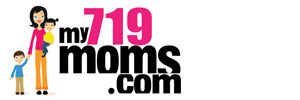Summer is my favorite time of year, it always has been, but as a mom of a toddler who is newly “toddling” summer days are looking a bit more…scary. I feel crazy saying that, but what I once saw as beautiful, sunny Colorado days to bronze my skin, hike, and garden is now the perfect recipe for sunburns, scraped knees, and bugs in the mouth (nothing like a little protein!).
As parents’ we know that the injuries toddlers experience from playing outdoors in the summer months often require more than a bandage and mommy’s kiss to make them better.
I have been on a mission for the best first aid kit for my toddler, but they are really expensive and I do not want to have to buy several and take them apart to fit my needs for the summer. I need a kit that is lightweight – easy to throw in a backpack or the diaper bag – yet able to carry all of the must-haves for my crawler/almost-walker.
A toddler first aid kit is a must-have for all parents. To save money I’m putting together my own and customizing it to my needs, with a little help from the American Red Cross.
Make your own first aid kit with these simple tips:
•Container – reuse an old toiletries bag as your container, preferably one with different sized pockets and compartments for storing and keeping items organized. Another good option is a small to medium size plastic container (ie: Tupperware, lunch box or tackle box) that will fit into your beach bag, backpack, diaper bag or glove compartment of your car. Whatever you use to hold first aid items should be easy to open for adults but difficult for small children to get into, large enough to fit everything you need and water-resistant.
•Band aids and small bandages – different sizes and shapes (including butterfly). Keep them loose in separate, small resealable baggies (Ziploc snack size bags are perfect) sorted by size and shape so they are easy to access and stay contained.
•Bactine – or other antiseptic with pain relief is essential to have on hand especially when it is difficult to clean a wound. Any form (liquid, spray, wipes), but liquid is best when a wound needs flushing.
•Instant cold packs – important to have on hand and can be activated in seconds for fast aid to reduce swelling. These take up a lot of room but if you can fit them you should keep at least two in your kit because they are single-use.
•Gauze – can be purchased in different size pads or in rolls and every kit should have some of each. Large pieces can always be cut down to smaller sizes.
•Scissors – for trimming gauze, bandages and for cutting away clothing. Sharp, curved medical scissors (as opposed to pointed scissors) are best.
•Adhesive tape – has many uses including securing splints and bandages. One roll will go a long way.
•Latex gloves – for protection of the person wearing them as well as the injured.
•Tongue depressors – for checking sore throats or lesions and wounds in the mouth and throat.
•Small flashlight – in case it is dark out when first aid is needed and for checking ears, nose, throat and eyes.
•Tweezers – for removing splinters, ticks, small fragments or other debris.
•Thermometer – a digital underarm or rectal thermometer is preferable to an oral thermometer when taking the temperature of a young child in distress. If you prefer a rectal thermometer, be sure to keep some petroleum jelly or other lubricant in the kit as well.
•Medications – include any or all of the following depending on your children’s needs: children’s liquid pain reliever such as ibuprofen or acetaminophen (as directed by your pediatrician) with a dosage measuring spoon or cup; calamine lotion or hydro cortisone cream for rashes and insect bites; saline nasal drops or spray; Epinephrine pen or injector; asthma inhaler; Children’s Benadryl or other antihistamine for allergic reactions (as directed by your pediatrician); antibacterial cream.
•Pedialyte – for quick rehydration, especially when child is experiencing diarrhea or vomiting.
•First Aid manual – a quick reference guide to help you tend to many different emergencies could mean the difference between effectively treating an injury and making the situation worse. The American Red Cross puts out a handbook sized to fit into most first aid kits that you can buy or print your own copy for free.
•Emergency Numbers – Having all important phone numbers readily available ahead of time will help keep you calm. You can type your own or click here for a printable emergency number sheet. Keep one at home, in your car and in your handbag or diaper bag. This is also an important list for babysitters to have handy, just in case.
If you type up your own phone list, make sure it includes these numbers:
•Emergency Medical Services: In most places this is 911, but your community may have its own number – check your telephone book if you’re unsure.
• Poison Control Center: 1-800-222-1222. This toll-free number will put you in touch with the poison control center in your area.
• Hospital emergency room
• Fire department
• Police department or sheriff’s office
• Your child’s doctor
• Parents’ work
• Parents’ cell phone
• Neighbors and/or relatives
• Pharmacy
**Your list should also include known allergies (especially to any medication), medical conditions, medications taken by family members, and insurance information for all members of the family.
For more information: Visit the American Red Cross.
-Lauri





